Grand Canyon Camping Trip
Thinking about camping in Grand Canyon National Park? Well, it’s the best way to enjoy the park…Especially if hiking in the Grand Canyon is on your bucket list! So in this blog, we’ll give you lots of tips on places to stay and camp within the park.
Why Camp in Grand Canyon National Park?
- No waiting in lines of traffic to get into and out of the park
- Enjoy the early morning wildlife- elk!
- Stay later for those epic sunsets over the canyon
- Listen for the coyotes at dusk and dawn!
- Enjoy making dinner and spending time with family & friends around the campfire
Best Time of Year to Find Lodging or Camp at Grand Canyon National Park
Fall and spring bring fewer crowds and milder weather to the Grand Canyon. This means better access to campgrounds. And you will avoid the intense heat in the summertime!
It’s important to note that the South Rim, where you’ll find Grand Canyon Village, is 7,000 ft above sea level. Therefore, expect cool summer nights and winter snow!
Reservations usually need to be made in advance if you’re camping during peak season. However, there are several free dispersed camping spots just outside the park. More on finding the best camping in a bit!
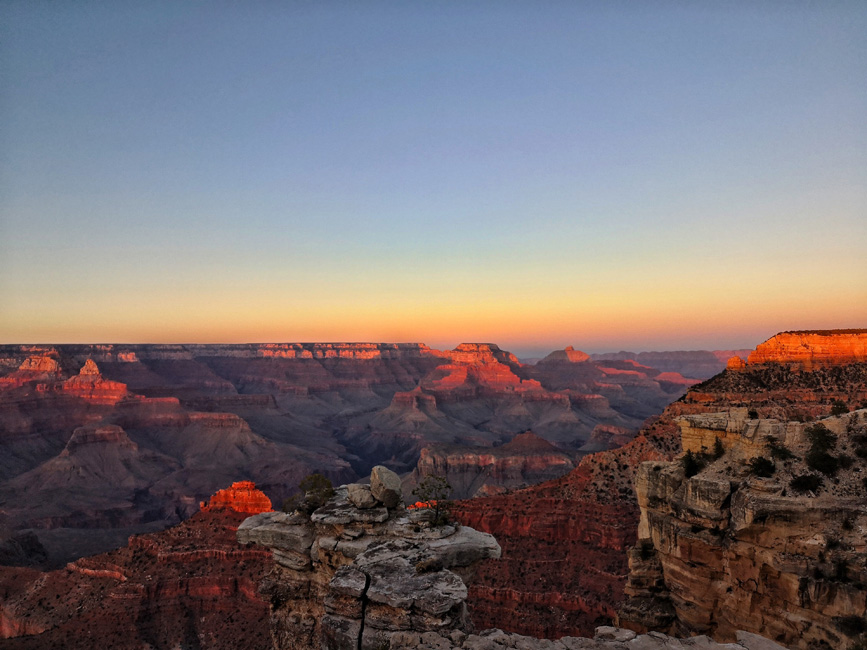
Those Grand Canyon sunsets. Where the colors seem to keep changing every minute!
Top Things to Do While Camping in Grand Canyon National Park
1. Hiking
Here are a few options for hiking in the Grand Canyon. Most depart hikes below depart from the South Rim:
Bright Angel Trail:
Descending steeply into the canyon, the Bright Angel Trail drops 4,000ft. in 9 miles! If you’re here for just the day, there are 2 different rest stops that make good turnaround points. If you plan to stay overnight there’s the Bright Angel Campground or Phantom Ranch, at the bottom of the Grand Canyon.
South Rim Trail:
Hiking along the South Rim of the Grand Canyon, from the South Kaibab Trailhead to Hermit’s Rest, is a fairly easy, paved, 13-mile hike. Lots of viewpoints, like Mather Point or Yavapai Point. And there are also shuttle stops if you want to catch the bus back!
South Kaibab Trail:
Another steep hike, the South Kaibab Trail drops 5,000ft. in 7 miles! There is hardly any shade or water available on the trail.
North Kaibab Trail:
The North Kaibab Trail is the only maintained hiking path that departs from the North Rim. You’ll face challenging switchbacks and major elevation changes on this 14mi. out and back trail.
Rim to Rim Hike:
The ‘rim to rim’ hike is a bucket list hike from the South Rim of the Grand Canyon to the North Rim. From the South Rim, you’ll take the South Kaibab Trail to the North Kaibab Trail for a total of 21 miles. Going North to South? Take the North Kaibab Trail to the Bright Angel Trail for 24 miles one way. Many hikers chose to stay overnight at Phantom Ranch, about 1/4 mile from the Colorado River.
A word of caution: Do not attempt this hike unless you have cool temperatures, are incredibly fit, and have plenty of hiking and backpacking experience. Entrance in a lottery is needed if you want to make reservations at Phantom Ranch. All other campgrounds within the park can be reserved through Recreation.gov or Grand Canyon Lodges.
Havasupai Indian Reservation and Havasu Falls:
And finally, one of the most popular waterfall hikes in the country is to Havasu Falls on the Havasupai Indian Reservation at the bottom of the Grand Canyon. The gorgeous blue waters of the Colorado River appear in stark contrast to the red canyon walls. This is another hike that is ideal for backpackers planning to stay overnight. Permits, camping, lodging, or mule trips are booked through the Havasupai Nation.
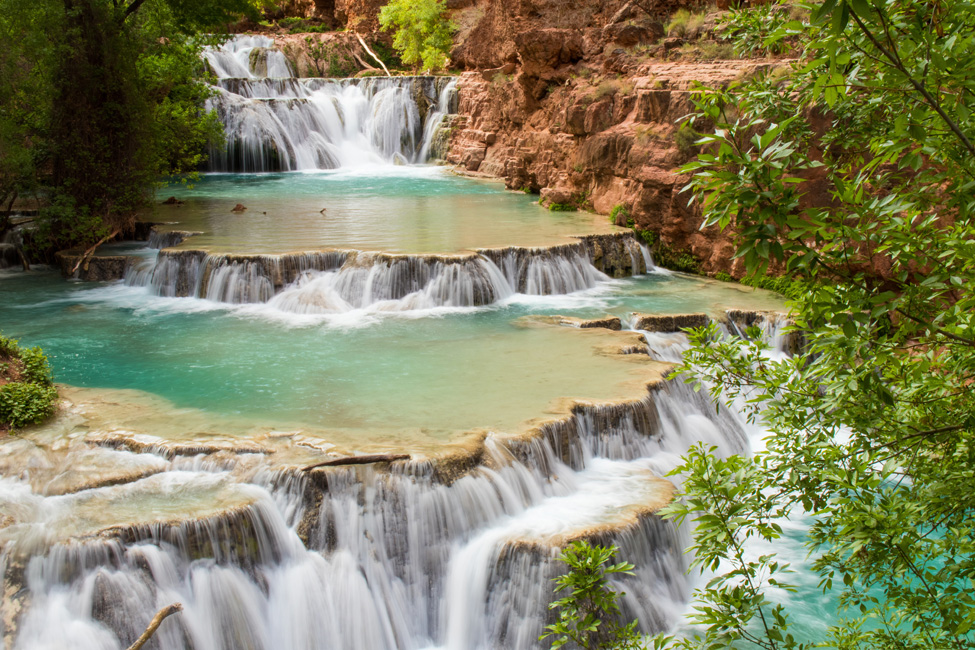
When you hike down to the Havasupai Indian Reservation, you’ll be rewarded with a chance to learn about the way of life and history of this region. Not to mention being surrounded by stunning scenery!
2. Learn about the geology and how the canyon was formed
Over the course of millions of years, tectonic activity lifted the Colorado Plateau. Then, the Colorado River carved through layers of rock, forming the Grand Canyon.
As the largest canyon in the U.S., the Grand Canyon tells millions of years of geologic history through the exposed layers of rock. Along the South Rim, there are several information panels and plenty of examples of the types of rocks found in the canyon.
3. Wildlife watching
The Grand Canyon is home to remarkable wildlife. Early in the morning, expect to see stunning mule deer and elk! Are you a bird-watcher? Keep an eye out for ravens, Stellar’s Jays, hummingbirds, Canyon Wrens, and even the California Condor!
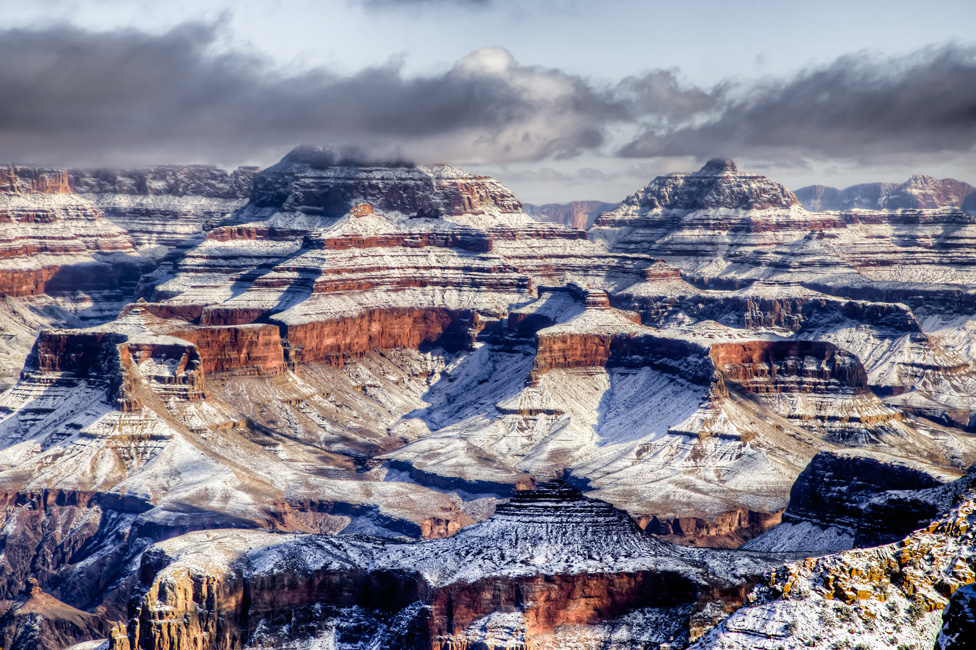
Flying over the Grand Canyon, even in winter, is something really special!
4. Take a helicopter flight over the canyon
Papillon Grand Canyon Helicopter tours offer several flights a day over the entire Grand Canyon. In addition, they offer flights into other parts of Arizona, Nevada, and Utah!
5. Dine at the El Tovar Lodge
Once considered the most elegant hotel west of the Mississippi, the El Tovar Lodge is a historical marvel. The lodge opened in 1905 following President Teddy Roosevelt’s visit, who later was a guest at the lodge.
Named after Pedro de Tovar in honor of explorers of the Grand Canyon in the 16th century, the hotel was constructed by the railway in anticipation of a rush of visitors. Built of local limestone and Oregon pine, the rustic but classic Dining Room is a fun way to experience the park’s history.
6. Catch sunrise and/or sunset at Mather Point, Yaki Point, or Desert Tower
Watching the sunrise or the sunset dip below the canyon walls is an unforgettable experience. And the park has plenty of lookout points to choose from!
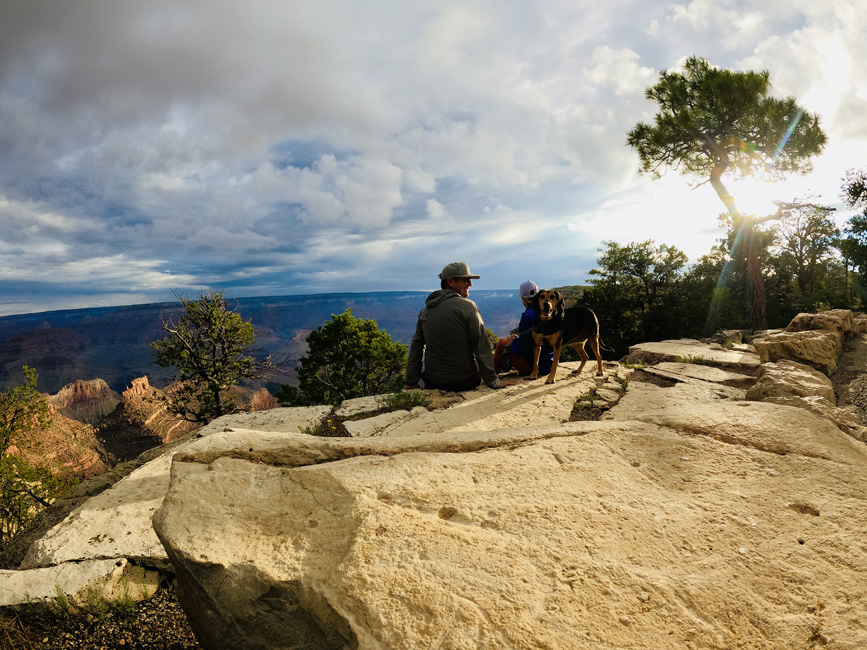
Even on stormy days, the Grand Canyon is still gorgeous! Catch the sunrise from anywhere along the South Rim Trail- and your pup can join you! Paved trails only for them.
How to Get to Grand Canyon National Park
From Phoenix, the South Rim is a 3.5-hour drive or 229 miles. In addition, you can pass through Sedona, AZ, which is a must-do if you love rock climbing, hiking, and mountain biking!
From Las Vegas, both the North Rim and South Rim are about 4.5-hour drives on over 270-mile routes.
From either Phoenix or Vegas, you’ll pass through Williams, Arizona, where you can drive on the famous Route 66! In addition, you can take the Grand Canyon Railway train from here into the national park. And once in the park, you can tour the Grand Canyon by free shuttle!
Campgrounds at the Grand Canyon
There are several different types of campgrounds and lodging within Grand Canyon National Park. Below are campgrounds that are only accessible by hikers and a backcountry permit is needed:
- Bright Angel Campground
- Cottonwood Campground
- Havasupai Garden Campground
Then there are your standard campgrounds that can be booked through Recreation.gov:
- Mather Campground
- Desert View Campground
Dispersed Camping
Since Grand Canyon campgrounds fill up quickly, there are some great dispersed camping spots just outside the main entrance! You can disperse camp along Forest Road 302 or Forest Road 688 at the South Rim, near the entrance.
In addition, about 42% of Arizona is made up of public lands, which means the state is one of the best for dispersed camping!
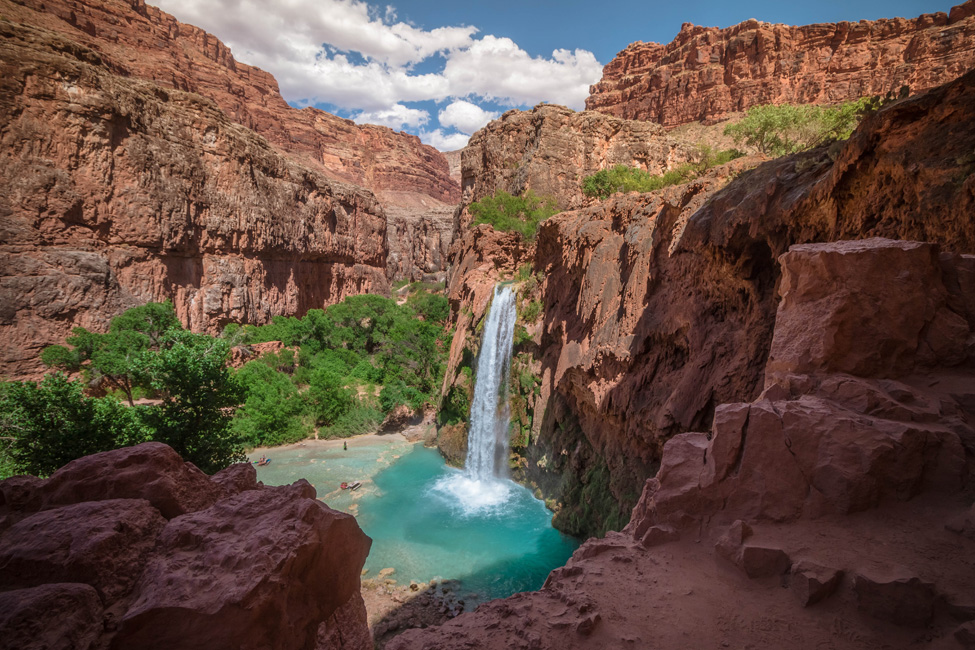
If you get the chance to camp at the Havasupai Indian Reservation, where you’ll find Havasu Falls, do it!
Lodging and Accommodations in Grand Canyon National Park
There are several beautiful places to stay in the Grand Canyon if you choose not to camp. These can all be booked through the Xanterra Grand Canyon National Park Lodges site:
- El Tovar
- Bright Angel Lodge & Cabins
- Kachina Lodge
- Thunderbird Lodge
- Maswik Lodge
- Phantom Ranch
- Yavapai Lodge
- Grand Canyon Lodge North Rim
If campgrounds or lodges in the park are booked, check out options in nearby “gateway” towns, including Tusayan, Williams, Kingman, Flagstaff, and Page.
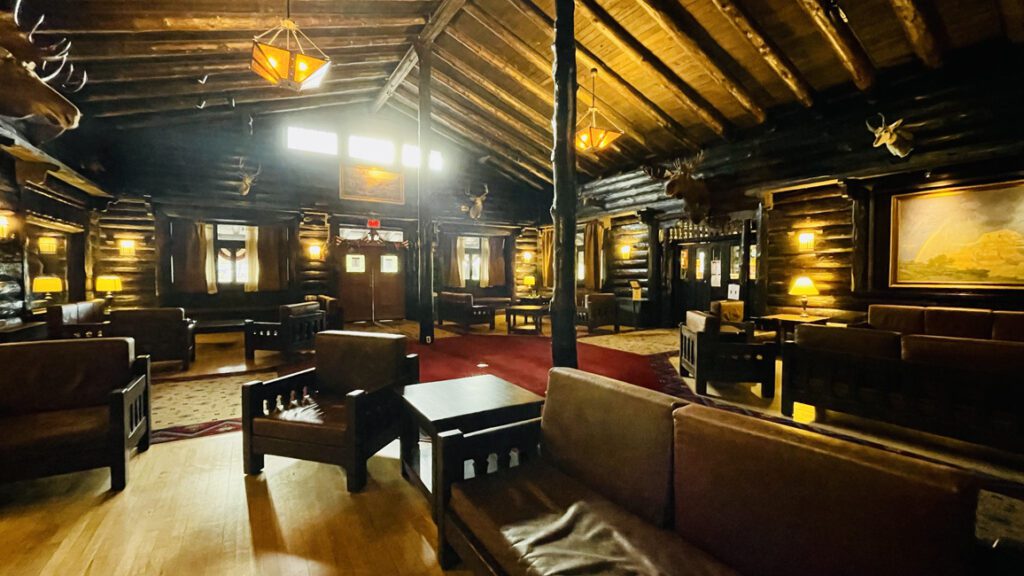
Even if you do not stay at the El Tovar, head in for dinner or drinks!
What to Pack for your Grand Canyon Trip
When camping at Grand Canyon National Park the temperature can range quite widely. It can be below freezing at night and rise into the 90s during the day.
Therefore, pack lots of layers! Good hiking boots. Rain gear or a waterproof jacket and pants. Wool socks!
Need a packing list? Check out our Adventure Camping Packing List! We even have a downloadable PDF you can print out and tape to your storage closet door.
Final Thoughts: Other things to do nearby in Arizona and Utah
Grand Canyon National Park is central to a lot of other amazing destinations in the Southwest! Here are some of our favorite things to do nearby:
- Hike the Narrows or Angel’s Landing in Zion National Park
- Explore like a local by taking the road less traveled in Utah’s National Parks.
- Visit the pine forests of Flagstaff
- Explore the vortices of Sedona, and enjoy some epic mountain biking and rock climbing!
Until next time, happy camping and exploring!
Meredith McConvill, Top Rope Media
Recent Comments